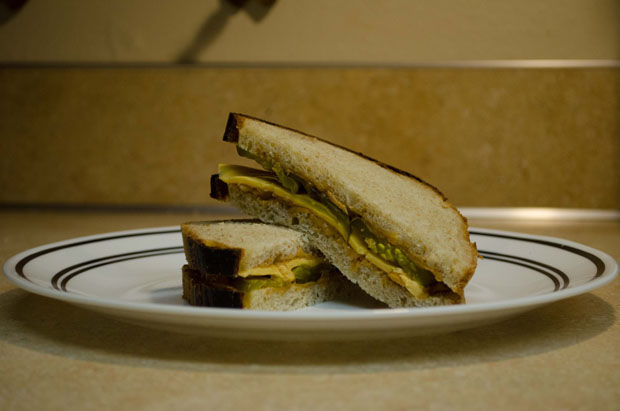The sandwich of a (quarter) century
November 5, 2014
Of all the sandwiches I have eaten in my quarter-century lifetime, there have been three that I remember distinctly like no other.
The first was at a train station in the South of France, on a slightly stale baguette, with pats of cold butter, tomatoes, Gruyere cheese, and cured ham like prosciutto.
It was emotionally perfect: restorative after hours on the train with more ahead. A symphony of rich sweet butter interplayed with funky cheese. The ham, though of no great provenance, added much needed salt and umami that only comes from well hung meat. The tomatoes, though out of season, served their purpose in keeping the package moist.
For years it would be the sandwich experience that all others would be judged against and failed to stand alongside.
Later in college and in an inebriated state of mind, the munchies kick in. And as we ate out the fridge, heroically out came another ham and cheese sandwich.
This rendition included American “French” bread, ham as in turkey, and cheese as in American. Perhaps less refined, but by no means inferior. In a moment of clarity between the haze and distance in my mind, I had realized another perfect sandwich was bestowed upon me.
It seems the very best moments of food occur in the most unexpected places and times. Context has always been crucial in putting value and meaning into things, eating included – it’s one of the reasons that grandma’s tamales/pie/noodles (or whatever it is) will always be the best and no one else’s.
Thinking of food intellectually is a constant excuse for me to eat, although one can be accused of being pompous often. But with experiences, as with these last two sandwiches hits, it’s always good to take a step back and see what it is that made the moment so distinct for it’s always a struggle in recreating that moment.
It’s particularly curious when components are never as good as they should be. The baguette could have been fresher, the tomatoes sweeter, the cheese older, and the ham fattier.
All of this proved irrelevant after a few drinks or some very potent smoking leaves where the senses can become either unruly and dull or enhanced. How the mind decides is a constant mystery, and why my senses seemed focused on those two sandwiches is unknown.
After taking a year off school, the very first thing I ate coming back to Pullman was a sandwich, and what a glorious one it was – peanut butter and pickle.
I first read of the PbP, as I like to call it, in the dining section of The New York Times a couple of years back. An awkward sounding combination as neither peanut butter nor pickle held any affinity in my larder.
What a revelation. In a perfect example of corporate branding, the synergistic energy of the three components made the whole greater than the sum of its parts.
There is immense balance in both texture and flavor from the sweetness of the bread and butter pickle (it cannot be dill), earthy and salty peanut butter (crunchy), and the soft pillowing blanket bread. I have since upgraded the PbP to a PbPC, with the addition of American cheese. No, you cannot use cheddar, you elitist bourgeois.
The sandwich has also been a godsend in days when rations are running low or when time is short. No need to cut tomatoes or spread mayo or mustard. Don’t have ham? No problem! Three ingredients, one perfectly-restorative and balanced sandwich.
The PbP is special to me, not just for it being a metaphor in sandwich harmony, but also of its symbolism. The ingredients are those very close to the hearts of America and flavors associated with studying here.
Most importantly, it’s easily replicated, for getting a proper baguette here is impossible, and I don’t know where that other sandwich came from.
So go ahead, fix yourself a PbP (C). Have a sandwich moment.



















